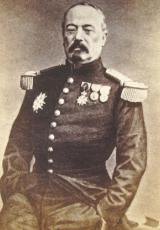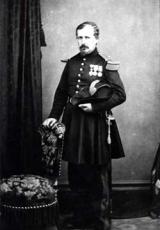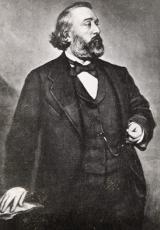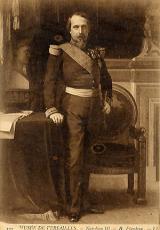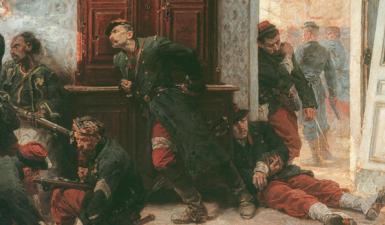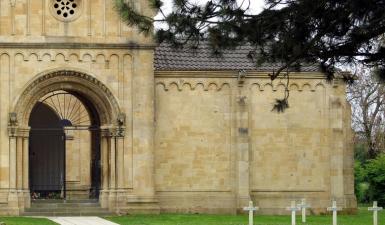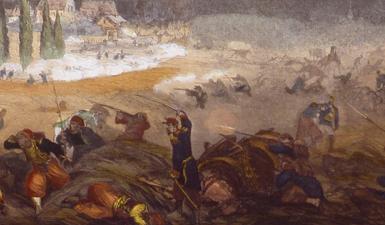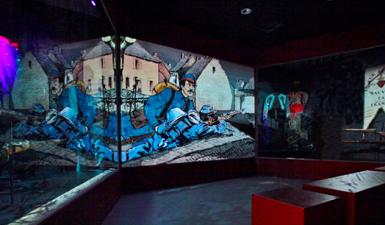Understanding the Franco-Prussian War
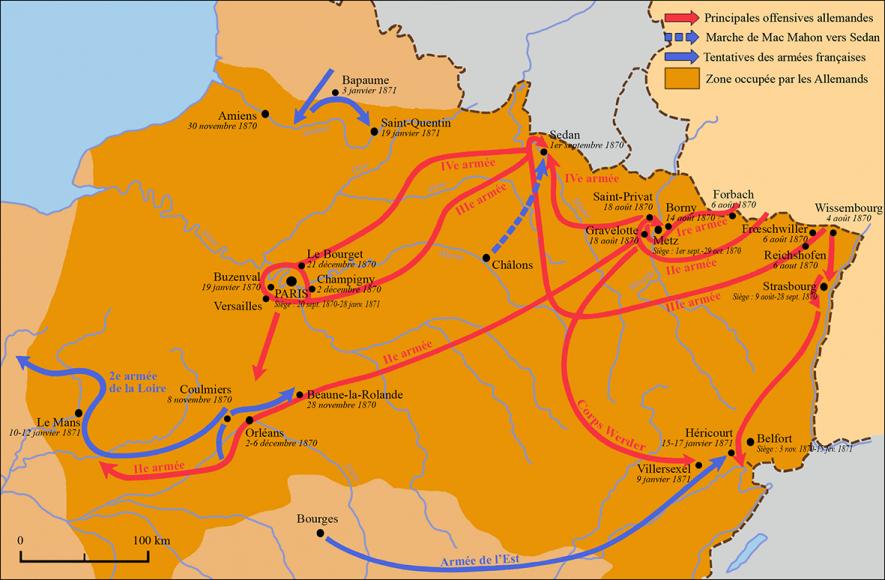
Contents
13 juillet : dépêche d’Ems, communiqué offensant pour la France envoyé par le chancelier Otto von Bismarck à toutes les ambassades et aux journalistes allemands, prétexte pour engager la guerre.
19 juillet : déclaration de guerre de la France à la Prusse soutenue par les États allemands du Sud.
20 juillet : nomination du maréchal Le Bœuf au poste de major général de l'armée du Rhin.
26 juillet : nomination de l'impératrice Eugénie comme régente.
28 juillet : Napoléon III à la tête de l'armée à Metz.
2 août : le roi de Prusse à la tête de ses troupes à Mayence ; attaque française sur Sarrebruck.
4 août : défaite française à Wissembourg.
6 août : défaite française à Frœschwiller-Wœrth et à Forbach-Spicheren ; invasion de l’Alsace et de la Lorraine par les Allemands.
8 août : début du siège de Bitche.
9 août : renversement du gouvernement Ollivier ; le comte de Palikao nommé ministre de la guerre.
10 août : début du siège de Phalsbourg.
12 août : le maréchal Bazaine commandant en chef de l’armée du Rhin.
14-18 août : défaites françaises dans la région de Metz (Rezonville, Mars-la-Tour, Gravelotte, Saint-Privat…)
16 août : siège de Strasbourg.
20 août : début du siège de Metz par la IIe armée prussienne.
24 août-28 octobre : défense de Verdun.
25 août : offensive française contre les troupes prussiennes afin de dégager le maréchal Bazaine de Metz.
1er septembre : défaite française à Sedan.
1er septembre-10 novembre : défense de Neuf-Brisach.
2 septembre : capitulation de Sedan ; Napoléon III prisonnier ; signature de l'acte de reddition par de Wimpffen, commandant l’armée de Châlons, et von Moltke, commandant l’armée allemande, au château de Bellevue.
3 septembre : Napoléon III captif en Allemagne.
4 septembre : chute du Second Empire ; proclamation de la République ; Léon Gambetta ministre de l’intérieur.
19 septembre : début du siège de Paris.
27 septembre : capitulation de Strasbourg.
11 octobre : occupation d’Orléans par les Prussiens.
27 octobre : capitulation du maréchal Bazaine à Metz (près de 150 000 prisonniers et un matériel considérable livrés à l’ennemi).
3 novembre : Belfort investie par les Prussiens.
9 novembre : victoire française à Coulmiers ; Orléans reprise par les Français.
28 novembre : défaite française à Beaune-la-Rolande.
30 novembre-2 décembre : bataille de Champigny.
2 décembre : défaite française à Loigny.
2 décembre-4 décembre : bataille d'Orléans réoccupée par les Prussiens.
3 décembre : début du siège de Belfort.
12 décembre : fin du siège de Phalsbourg.
13 décembre : occupation de Blois par les troupes prussiennes.
14 décembre : capitulation de Montmédy.
1er janvier : reddition de Mézières.
11-19 janvier : victoire allemande au Mans, à Héricourt, à Saint-Quentin, à Buzenval.
18 janvier : Proclamation de l'Empire allemand dans la galerie des Glaces du château de Versailles.
26 janvier : capitulation de Paris et signature de l'armistice.
1er-2 février : combat de la Cluse.
6 février : démission de Léon Gambetta.
12 février : Adolphe Thiers élu Chef du pouvoir exécutif.
15 février : prorogation de l'armistice du 19 février à midi au 24 avec possibilité de renouvellement.
18 février : reddition du colonel Denfert-Rochereau sur ordre d'Adolphe Thiers.
28 février : signature des préliminaires de paix entre l'Empire allemand et la France.
18 mars : début de la Commune de Paris.
10 mai : signature du traité de Francfort mettant fin à la guerre franco-allemande (cession de l'Alsace ainsi que de la partie Nord de la Lorraine, indemnité de guerre fixée à cinq milliards de franc-or).
21 mai : début de la semaine sanglante.
28 mai : Paris reprise par l’armée ; fin de la Commune.
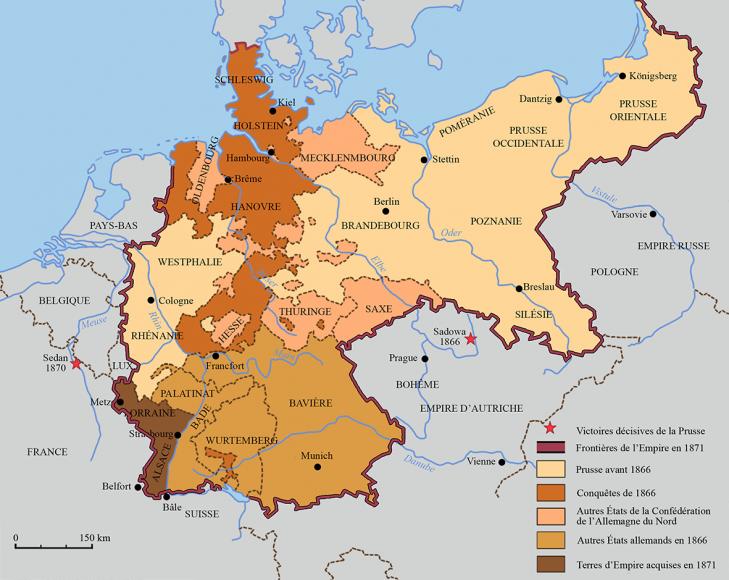
Summary
DATE: 19 July 1870-10 May 1871
OBJECT: The Franco-Prussian War
OBJECTIVE: German unification
OUTCOME: Proclamation of the German Empire on 18 January 1871 / French defeat
FORCES PRESENT: France, Germany
The Franco-Prussian War is a forgotten war. The central place now afforded it in the première course syllabus (students aged 16 and 17) and the commemoration of its 150th anniversary in 2020 present an opportunity to remember the importance of its lessons, in particular to the understanding of the contemporary world it inaugurated.
The Franco-Prussian War was a short war – it lasted only ten months, six of which involving actual fighting – restricted to two nations, France and Germany, and was relatively unbloody – fewer than 200 000 dead – compared to those that came before and after it: the Napoleonic Wars and the American Civil War on the one hand, the two world wars on the other.
It was born of Bismarck’s desire to unify Germany around Prussia. On becoming prime minister of Prussia in 1862, in his first speech to the Landtag he promised to achieve this by “iron and blood” if necessary. In two wars, first against Denmark, in 1864, then against Austria, in 1866, he drove the Habsburgs from Germany and established a North German Confederation, which he governed with King Wilhelm of Prussia. There remained the matter of uniting the states north and south of the Main, such as Bavaria, which was hostile to the process due to an attachment to its own particularities. To achieve this, Bismarck had the idea of provoking France into declaring war on Prussia, and thereby draw all Germans into a conflict with the aggressor.
France declares war
The Spanish succession provided him with the pretext. With the throne in Madrid vacant, he pushed the candidacy of a Hohenzollern prince, a distant cousin of the king, which the Spanish Cortes accepted. When the news reached Paris, on 3 July 1870, Napoleon III’s Second Empire felt threatened with being surrounded, as in the time of Charles V. To begin with, French diplomacy succeeded in getting the prince to renounce. Seeing his plan fail, Bismarck planned to resign.
However, under pressure from his entourage, the press and Parisian public opinion, Napoleon III asked for additional guarantees from the King of Prussia, who politely refused to give them to the French ambassador sent to Ems, where he was taking the waters. On learning the news, Bismarck gave an offensive twist to this refusal, in a text that has gone down in history under the incorrect name of the “Ems Dispatch”, which he circulated around Europe. As he had hoped, this document had the effect of a “red rag to the Gallic bull”. A government motion for budgetary provisions for war was passed by parliament on 15 July and, four days later, war was declared on Berlin. From that moment on, all the German states sided with Prussia. Meanwhile, France, the apparent aggressor, was completely isolated. Even Italy and Austria, who had pledged their assistance, prudently waited to see what happened before acting.
Over the previous eight years, Prussia had turned all its attention towards the army, with its “Iron Chancellor”, its king, a soldier at heart, who lent him a sympathetic ear, the chief of the general staff, General von Moltke, and Roon, the war minister and strategist behind the 1859 reform that made military service compulsory and universal for a period of three years and created a territorial army for men aged 18 to 45: the Landwehr. France became brutally aware of how far it lagged behind with the crushing defeat of Austria, at Sadowa, on 3 July 1866. Yet the 1868 Niel Act, intended to bring it up to speed, resulted only in half measures, such as the creation of a mobile national guard with very short training periods.
Napoleon III decided to command his army himself, following in the footsteps of his uncle Napoleon, and appointed his wife Eugénie as regent, as he had previously done in 1859 and 1865. Yet his state of health ought to have prompted caution: he had a large bladder stone which made him an intermittent sovereign. Worse still, he decided that the imperial prince, his only son, aged 14, should go with him, as his baptism of fire, for he planned to abdicate in the boy’s favour when he reached the age of majority, in 1874. Unlike most French people, however, he expected a long and difficult campaign. On arrival at the headquarters in Metz, by train, in late afternoon on the 28th, he immediately held a council of war, at which he learned of the lamentable state of the army.
The mobilisation and concentration of the troops had taken place amid utter confusion, partly due to a lack of preparedness and partly because Napoleon III had drastically changed plans at the last minute. Instead of three armies as originally planned, he had preferred a single one of 265 000 men, scattered all along the Rhine in seven corps, with the Imperial Guard in reserve.
An offensive strategy against a defensive one
The French admittedly had a better rifle than the Germans, the Chassepot 1866, as well as a new invention, the de Reffye mitrailleuse, which fired 75 shots per minute, but these were their only advantages. They had no complete maps, having to make do with hurriedly drawn-up sketches. And above all, they had a faltering command. Napoleon III had put his war minister, Le Boeuf, in charge of operations, but it was a regrettable choice. Le Boeuf was an artillery officer and knew nothing about commanding an army. Most of the generals assisting him lacked the required expertise. Commissioned from the ranks, they had earned their stripes in Mexico, in the Second Italian War of Independence more than ten years earlier, or in the African campaigns, which gave them tactical and strategic competences not relevant to the Franco-Prussian conflict. Many were not up to their responsibilities. Through their fault, the French army remained on the defensive, whereas the national spirit and troop morale required a strategy of attack.
Facing the French was an experienced army, fresh from victories against Denmark and Austria, whose command had clearly chosen the offensive. The Germans were split into three armies totalling 450 000 men, with the same number in a reserve comprised of seasoned veterans. The supply structure was remarkable.
Prussian superiority was also due to the use of large artillery batteries and an excellent field gun, the steel, breech-loaded Krupp, which fired contact-detonating shells and had a longer range and higher firing rate than its French counterpart, the bronze, muzzle-loading “pièce de 4”, which relied on time fuses with only three set detonation distances.
Article in the Journal du Peuple warning that France was in danger following the initial defeats of the French armies, 10 August 1870. © Roger-Viollet
Aside from the rapidly aborted attempt at a maritime blockade on Germany and a landing in the Baltic, the French command abandoned the idea of a major offensive when it learned that the Austrians were deferring their support. The army made do with launching an attack on Saarbrücken, on 2 August. As the town was defended by only three battalions and three squadrons of uhlans, it seized the key points but did not push forward any further, and ended up retreating without even destroying the bridges. When Napoleon III telegraphed the empress telling how the imperial prince had shown great nerve by picking up a cannon ball that had fallen at his feet, the government, which had little other news to report, decided to publish the story in the official gazette. It had the opposite effect. The opposition claimed the cannon ball had been put there on purpose, and mocked the “cannon ball boy”.
The Germans realised the French did not have a plan and went on the offensive by marching on Alsace. On 4 August, they inflicted defeats on the French at Wissembourg and, two days later, at Wörth, when the French cuirassiers, tasked with covering the retreating French army, were crushed in the charge of Reichshoffen, a turning-point in modern warfare, in which the cavalry, which had played a key role in the American Civil War five years before, were crushed by firepower. This defeat forced MacMahon to abandon Alsace to the Germans and, in the meantime, the French were also defeated in Lorraine, at the Battle of Spicheren, on that fateful day of 6 August. These two simultaneous defeats destroyed France’s military prestige and convinced the Austrians and Italians not to enter the war on its side.
“Return victorious or die fighting”
In the capital, the far left no longer concealed the fact that it hoped for a Prussian victory, which would mean the end of the Empire. Yet the people remained patriotic. The head of the liberal government, Ollivier, asked the empress to write to her husband requesting him to return to Paris. She refused, saying: “It would look like he was fleeing.” The sovereign must return victorious or die fighting. To Ollivier, however, “the emperor [was] an obstacle to victory. He is unfit to command and he prevents another from commanding.” The fact was Napoleon III found it increasingly difficult to remain on horseback. He had a catheter in his bladder and his body was swathed in towels to soak up the leaks. Above all, he was in terrible pain. On 9 August, Ollivier and his government were toppled and the empress asked a general, the Count of Palikao, to form a new government. Napoleon III was not consulted.
Achille Bazaine (1811-88), Marshal of France, commander-in-chief of the Army of Mexico, 1863. Museum of Versailles. Painting by Jean-Adolphe Beaucé. © Roger-Viollet
The French troops were reorganised into two large armies. The first was now stationed at the Chalons camp, to which MacMahon had retreated. The popular Marshal Bazaine was given command of the second, further east, and appointed commander-in-chief. Regarded as France’s final hope, he, too, turned out not to be the right man for the job. In three battles fought from 14 to 18 August, he managed to become surrounded at Metz. This was all the more serious as he outnumbered the Germans in the first, at Borny, and was victorious in the second, at Mars-la-Tour – one of the biggest and bloodiest battles of the war, with 15 000 dead and wounded on each side – yet lacked the audacity to take advantage of it. After the third battle, at Gravelotte, France’s main and best army, a 180 000-strong force, was surrounded. It was the first key turning-point in the war. At the same time as they laid siege to Metz, the Germans marched on Paris.
At the Chalons camp, to which all had retreated in disarray, including Napoleon III, the troops were in appalling spirits. Drunken zouaves danced stark naked before their officers. Napoleon III was booed when he emerged from his tent. He took the decision to retreat to the capital, only to be told by Eugénie and Palikao that he must go to Bazaine’s aid. The emperor and MacMahon obeyed. On receiving a false report that Bazaine had succeeded in getting out of Metz and was heading north, he marched in that direction with 120 000 men. On 25 August, the Germans found this out and marched there ahead of them, with twice as many men. To Napoleon III, retreating to the west was the best option. From the capital came a new dispatch from Eugénie and Palikao: “If you abandon Bazaine, there will be revolution in Paris.” Napoleon III gave in once again: “They want us to go and get killed over there. Let’s go.”
From the Battle of Sedan to the Siege of Paris
When the French army was forced to take refuge in Sedan, Napoleon III took the precaution of sending away the imperial prince, while remaining in command of his army. The town of Sedan, situated in a valley, was indefensible. Von Moltke knew this and attacked it on three sides, the third being the Belgian border. At dawn on 1 September, the Germans launched their attack. A deluge of fire rained down on the town. At the beginning of the battle, MacMahon was seriously wounded by shrapnel when inspecting the troops. The French were quickly overrun. A series of cavalry charges sought to loosen the stranglehold, but all were bloody failures, while at Bazeilles, the marine troops and chasseurs d’Afrique resisted heroically against the Bavarians. Watching the battle from on high, King Wilhelm exclaimed in admiration: “Ah, what brave men!”
The Battle of Sedan, 1 September 1870. Oil on canvas. © Iberfoto / Roger-Viollet
From 8 am to midday, Napoleon III sought out death in the thick of the fighting. But he was deprived even of that satisfaction, despite shells exploding just metres away from him and killing his aide-de-camp by his side. He then ordered a white flag to be raised to spare a bloodbath, and wrote to the king of Prussia. Wilhelm was astonished to learn that Napoleon III was at Sedan. Bismarck and von Moltke, who were with him, were beside themselves with joy. Next came the crucial decision of armistice or surrender. It was a political decision, for an armistice would lead more swiftly to peace and save the Empire, which was what the Prussians wanted, fearing the installation of a hard-line revolutionary regime, as in 1792, in the event of a surrender. Aware of this, Napoleon III chose to surrender to preserves France’s chances. The next day, he signalled this to Bismarck, then to King Wilhelm. From then on, the Prussians no longer showed him any consideration. He and the 95 000 French prisoners were interned in Germany until the peace treaty was signed. Sedan marked the end of the imperial phase of the war. News of “the rout” triggered an uprising in Paris and the fall of the Empire, on Sunday, 4 September 1870. Eugénie’s desire to avert civil war before the enemy and a bloodbath on the one hand, and the paralysis of the imperial elites on the other, prompted no resistance.
The Republic was proclaimed. The more moderate republicans took the reins in a Government of National Defence with General Trochu at its head – governor of Paris, he was also a “conservative, Catholic Breton”, who was there to reassure the provinces. The strongman in the cabinet was Gambetta, appointed to the post of interior minister, soon to be combined with that of war minister, earning him the nickname “dictator”. Driven by the mystique of “year II” (in reference to the brief re-adoption of the French Republican calendar), the government decided to pursue the war, which was what Parisians wanted anyway. On 19 September, Paris was surrounded and, over the next four months, seven breakout attempts were made, all of them unsuccessful, earning Trochu this biting witticism from Victor Hugo: “Trochu, past participle of the verb trop choir [to fall too much].” Meanwhile, the siege was terrible, with food shortages forcing Parisians to eat rats, or even animals from the Paris zoo.
Ruins and barricade in Place de l’Étoile, Paris. © Roger-Viollet
On 7 October, Gambetta escaped from Paris in a balloon, to organise the defence of the provinces, first in Tours, then, in view of the German advance, in Bordeaux. He raised four new armies, while 11 regional camps of volunteers were organised across France. However, when Bazaine surrendered, on 27 October, handing Metz and his army over to the enemy, Gambetta broke with his policy of national union in favour of all-out, hard-line, partisan warfare. The 60 000 Breton volunteers at the Conlie camp who were reputed to be monarchists, and therefore a danger, were confined, decimated by dysentery, then ultimately diluted in the regular army. Meanwhile, in late December, the Germans began to bombard Paris to demoralise its population.
Signing the peace settlement and laying the foundations of the Republic
Despite a handful of victories, like that of Garibaldi in Dijon and the heroic siege of Belfort, in which Colonel Denfert-Rochereau distinguished himself, the defeats came thick and fast, until nearly a third of the country was occupied.
On 18 January 1871, the German sovereigns acclaimed the king of Prussia Emperor of the Germans, in the Hall of Mirrors of the Palace of Versailles. Two days later, the French government decided to request an armistice, which was finally signed a week later. Bismarck demanded that legislative elections be held, so that the terms of the peace could be negotiated with a legitimate power. Gambetta, who wanted to go on fighting, was forced to resign by his colleagues. The national assembly elected on 8 February 1871, formed of a majority of Legitimists and Orléanists in favour of peace, reflected the country’s weariness and brought Adolphe Thiers to power to negotiate the peace.
On 18 March, Paris, which wanted to continue the fight and refused to surrender its cannons, established the Commune. But it was crushed amid much bloodshed after ten weeks of existence. In the meantime, the peace settlement was signed in Frankfurt, on 10 May. Under its terms, France lost all of Alsace except Belfort, and a large part of Lorraine, territories immediately given the status of Reichsland, “common property of all Germans”. In addition, it was required to pay five billion francs in reparations, unprecedented for the time, with much of France occupied until it had been paid in full.
French war memorial near Colombey-les-Belles (Meurthe-et-Moselle). © Roger-Viollet
The human and material toll of this war was particularly heavy, especially given its short duration: 51 000 dead on the German side, 139 000 on the French. Added to the losses in battle were the ravages from smallpox. Yet the Prussians, who knew the importance of administering a second dose of the smallpox vaccine, saw only 450 deaths out of 8 500 soldiers infected (5%), whereas the French, unaware of the need for a “booster”, counted 23 500 deaths out of a total of 125 000 infections (19%). The war worsened the demographic situation in France, which had long since begun its demographic transition, requiring it to resort to immigration.
The war not only brought about a change in the way in which the French political and, in part, administrative landscape was peopled; it also led to a major discussion about the failure of the governing elites, which saw the participation of many intellectuals, including Renan, Taine and Littré. This led, amongst other things, to the creation of the École Libre des Sciences Politiques, in 1872, and the École Supérieure de Guerre, in 1876. The Republic began structuring itself around two pillars: education and defence. The Law of 27 July 1872 made military service compulsory, with only clergy and teachers exempt, the Law of 24 July 1873 reorganised the country into 18 large military regions, and the Séré de Rivières system of fortifications formed a new “iron fence” around the country. The war had stripped France of Alsace-Moselle, one of its three richest industrial regions, and while it may have succeeded in making a rapid recovery due to the wealth created under the Second Empire, the wound went deep and there was a marked desire for revenge.
An Alsatian family emigrates to France after the Franco-Prussian War. Drawing by Benoît, after the painting by Schutzenberger exhibited at the Salon de Paris of 1872. © Roger-Viollet
The war led to a shift from a French-dominated Europe to its domination by Germany, now united in an empire and proud of its victory, which it commemorated on Sedantag. Germany witnessed spectacular demographic and economic growth. Above all, Chancellor Bismarck succeeded in isolating France by means of a system of alliances, not least the Triple Alliance between Germany, Austria-Hungary and Italy. The latter had meanwhile taken advantage of the war to seize Rome from the Pope and make it its capital.
Lastly, the Franco-Prussian War contributed to strengthening international law, with the 1874 Brussels Conference, and to preserving the memory of those who died for their country, with the construction of large ossuaries on the initiative of the State, which maintains them today; Le Souvenir Français, founded in 1887, and the communes, also maintain large numbers of graves in local cemeteries, along with most of the Franco-Prussian War memorials.
The biggest paradox of this war, however, is that its memory has been effaced by the two world wars of the 20th century, which it gave rise to.
Author
Éric Anceau - Sorbonne Université
Read more
Articles of the review
-
The event
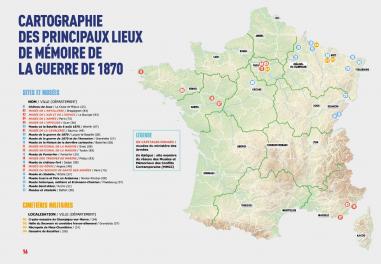
150 years ago: the Franco-Prussian War
Read more -
The figure
Le Souvenir Français
Founded in 1887, Le Souvenir Français is a “child” of the Republic. It was founded in response to the Republican government’s desire to use the memory of the Franco-Prussian War to “build a nation”. An heir to that conflict, it has always played an active role in its remembrance.
Read more -
The interview
Charlotte Schénique
A student of Lorraine University, Charlotte Schénique is interested in the history and heritage of the Franco-Prussian War in the region. She also works at the Musée de la Guerre de 1870 et de l’Annexion, in Gravelotte.
Read more
Related articles
- The Franco-Prussian War, 1870-71
- 1870-1871. The Franco-German conflict
- Direct impact and profound consequences of the Franco-Prussian War
- Towards a new Republic-Nation-Army triad
- France’s system of defence is put to the test in the Franco-Prussian War
- The Battle of Saint-Privat
- La bataille de Champigny
- Déclaration de Gambetta le 4 septembre 1870
- Départ en ballon de Gambetta


